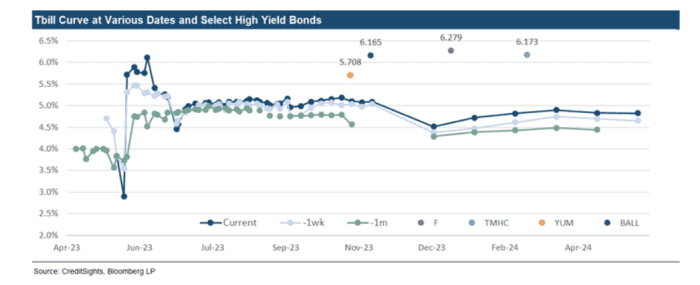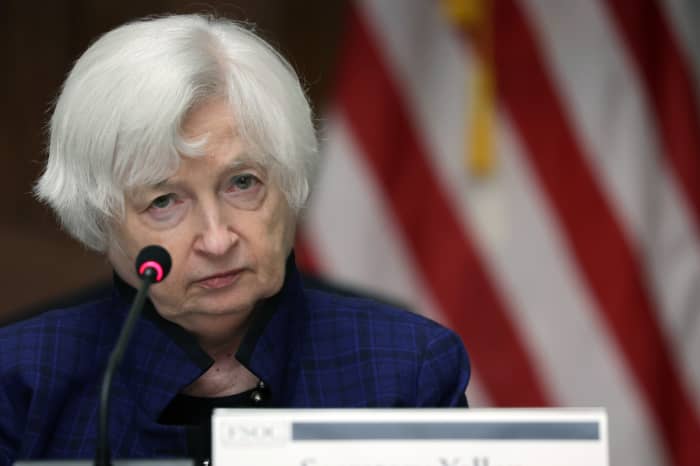The “least-loved” Treasury bills have yields resembling those on some junk bonds due to rising worries over the U.S. debt ceiling, according to CreditSights.
“Debt ceiling concerns have driven incrementally more extreme pricing distortions in the Tbill curve, with the 21-day cash management bill auctioned on Tuesday yielding 6.2%,” said CreditSights analysts led by global head of strategy Winnie Cisar, in a note Wednesday. “That bill matures on June 15 and marks the peak in the Tbill curve, although the yield has fallen a touch since auction.”
Yields on Treasury bills, a form of short-term U.S. government debt, have jumped ahead of the fast-approaching deadline for when Congress has to lift the country’s borrowing limit or put the Treasury Department into a troubling situation where it faces the risk of default. Treasury Secretary Janet Yellen has repeatedly warned Congress that the government could run out of cash as soon as early June.
The “pricing distortion” in the T-bill market “has gotten much worse over the past month, and incrementally worse over the past week as debt ceiling negotiations come down to the wire,” according to CreditSights. The peak of the current yield curve in the T-bill market resembles levels seen in the U.S. high-yield corporate bond market, the note shows.
High-yield bonds are also known as junk debt for their below-investment-grade ratings.
The CreditSights analysts highlighted the effective yields of short-dated junk bonds issued by companies including aluminum-packaging company Ball Corp.
BALL,

The current T-bill curve yields about the same as Ball’s 4% bonds due in mid-November and “just a bit less” than Taylor’s 5.625% securities maturing at the beginning of March, according to CreditSights. FactSet data show that both bonds are rated just below investment grade by S&P Global Ratings.
CreditSights pegged the effective yields of the Ball bonds trading at 6.165% and those for Taylor’s debt at 6.173%, according to the chart in its note.
“Debt ceiling negotiations appear to be at another impasse at present as discussions have been stop-and-start for several weeks now,” the CreditSights analysts said. “Our base case is that a default is ultimately avoided, but if a deal is not struck at the end of the week, it is increasingly likely this showdown will closely resemble the 2011 episode that resulted in S&P downgrading the U.S. government’s credit rating.”
In 2011, investors continued to buy long-term U.S. Treasurys despite the debt-ceiling battle coming down to the wire at the time, meaning their prices rallied and their yields fell.
The yield on the 10-year Treasury note
TMUBMUSD10Y,
Two-year Treasury yields
TMUBMUSD02Y,







